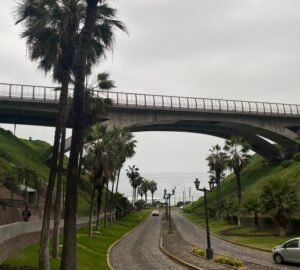7-day itinerary to discover the Sacred Valley of the Incas. From Cusco to Machu Picchu
By Serena Pedrioli
If you are planning your extraordinary trip to discover Machu Picchu, Cusco and the rich Inca civilization, you have come to the right place! In this article, I will take you through a compelling 7-day itinerary, starting in Cusco, the shining capital of the ancient Inca civilization. It will be an enthralling experience, allowing you to immerse yourself in the heart of the Valle Sagrado, exploring picturesque villages such as Ollantaytambo, experiencing the thrill of touching 5,000 meters above sea level at the famous Rainbow Mountain (or Vinicunca), and finally reaching the pinnacle of your journey at Machu Picchu, the astonishing wonder of the world.
Are you ready for this epic adventure? Accompany me on this extraordinary journey of discovery!
Table of Contents
Day 1 - Cusco, the capital of the Inca Empire

Our journey to discover the Sagrado Valley can only begin with what was once the capital of the ancient Inca Empire: Cusco. In fact, the city was founded by the Incas in the 13th century, and later this became the political, cultural and religious center of the Empire. The easiest way to reach Cusco is by a 1-hour, 15-minute flight from Lima, the present-day capital of Peru. Ideally, you should arrive in Cuzco in the morning so that you can make the most of this first day to acclimatize and explore this magnificent city.
Walk through the historic center
Then enjoy a quiet walk through the heart of the historic center to reach Plaza de Armas, overlooked by the imposing Cathedral. The square is very beautiful, with a large green space and benches to sit on to relax. In the center you can admire the striking fountain dedicated to the Inca king Pachactutec.
The stone of the twelve corners
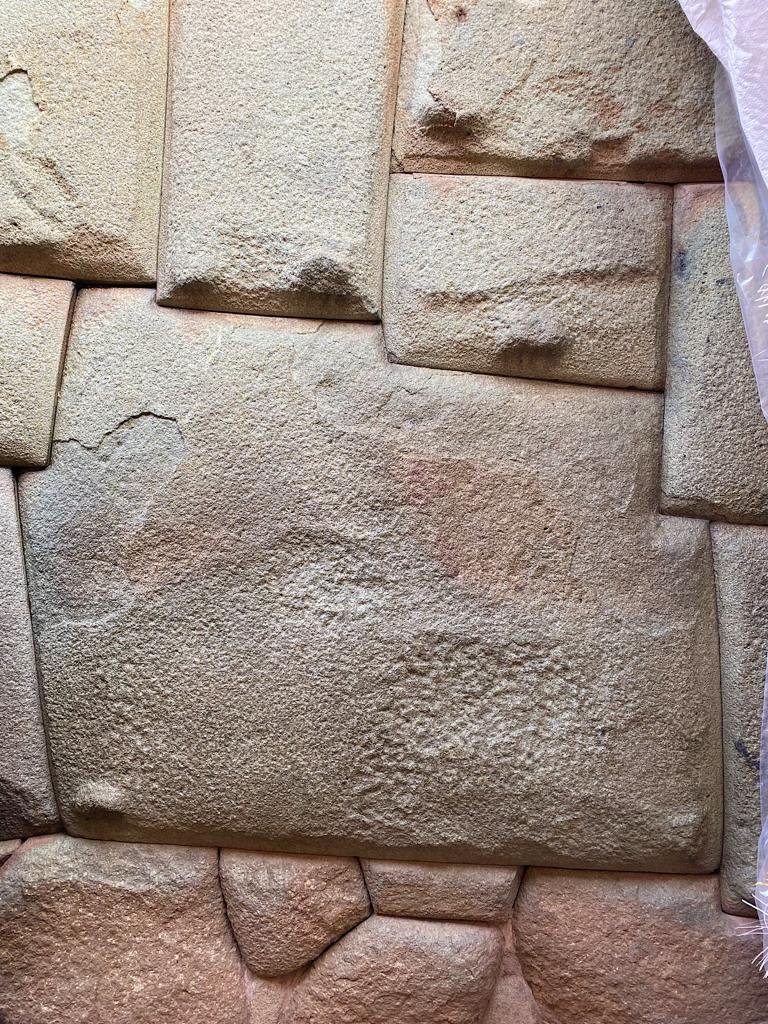
A few meters from the plaza you can reach the famous Stone of the Twelve Corners. The Stone is located on the wall of a building called Hatunrumiyoc, which means big stone in Quechua, and weighs about 6 tons. Its 12 corners fit perfectly with the stones around it, and according to experts it is a load-bearing stone for the entire structure of the building.
San Blas Neighborhood
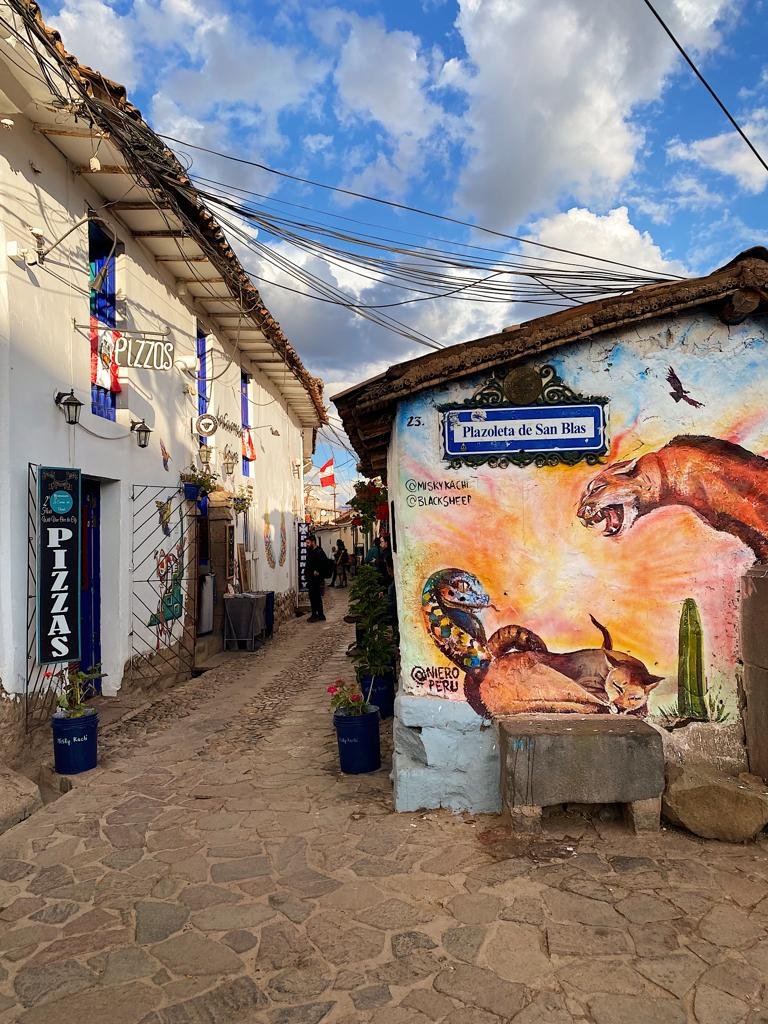
The last stop on our walk through the streets of the historic center is the San Blas neighborhood, just 10 minutes from the Plaza de Armas. This is a particularly picturesque neighborhood, also nicknamed "Artisans' Quarter" or "Artists' Quarter" since it is home to many workshops of popular artists.
Day 2 - Discovering the Fortress of Sacsayhuamán
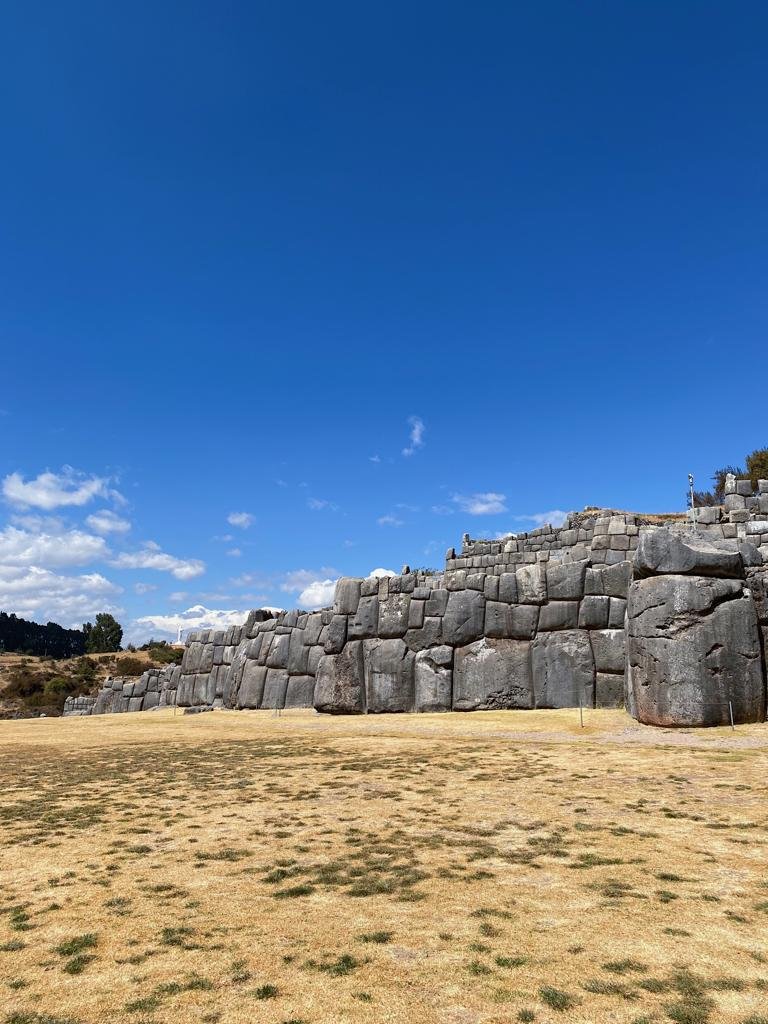
There are many archaeological sites that can be visited in Cusco, but due to the short time available, the Sacsayhuamán Fortress (meaning "wild falcon") is definitely worth a visit. In fact it is one of the most beautiful buildings in the world, built by the Incas led by Pachacutec in the 15th century. The fortress is located 2 km from the historic center of Cusco, and overlooks the city from its 3'700 m. s.l.m. To reach it, you can walk for about 45 minutes along a small street called "Suecia street", otherwise by one of the public buses (the Cristo Blanco or the Huerto) or by taking a taxi.
Once you have finished visiting Sacsayhuamán, you can consider reaching the Cristo Blanco located just a few minutes walk from the main entrance of the archaeological site. It is a sculpture of Jesus Christ 8 meters high and located on the hill Pukamoqo (red hill), a place considered sacred by the Incas. Entry is completely free and you can enjoy a suggestive view of the city of Cusco.
Read also:
Day 3 - Journey to Aguas Calientes
There are 3 different ways to reach the village of Aguas Calientes (also called Machu Picchu pueblo) from which you climb to the wonder of the world.
Because of the geography of the territory you can get to Aguas Calientes exclusively by taking a train that will take you directly to Aguas Calientes, a collective bus that will take you to Hydroelectrica and then you will have to walk along a stretch of the Inca Trail and finally you can walk the entire Inca Trail with which you will walk to Machu Picchu.
Passage through Hydroelectrica
In this itinerary we decided to propose the passage through Hydroelectrica, which will take you all day starting in the morning.
In Cusco, the many travel agencies offer the possibility to book this passage, much cheaper (about 20 dollars for one way) than the train and less tiring to walk around the Inca Trail. This is a 5-6 hour van ride that will take you to Hydroelectrica, a small village where the road from Cusco ends, after which you will have to follow a flat path of about 3 hours (part of the Inca Trail) along the train tracks that will allow you to reach Aguas Calientes, where you will spend the night.
It is an opportunity to walk for free part of the Inca Trail, which in fact is paid, and admire the pre-amazzonic forest up close. All with a relatively low level of difficulty.
However, we would like to point out that during the last part of the trip by van (approx. 1 hour), it is a steep dirt road that is certainly not suitable for those suffering from vertigo and that it would be better to avoid travelling during the rainy season (December-May).
Day 4 - Machu Picchu Wonder Tour
After spending the night in the magnificent village of Aguas Calientes, it is finally time to set out to reach Machu Picchu. In fact, Aguas Calientes is the starting point for those who want to reach the wonder of the world, located on top of a mountain at 2’430 m s.l.m. in the middle of a tropical forest.

To reach the wonder of the world, we recommend that you opt for the convenient shuttle buses, available every 10 minutes from the center of Aguas Calientes. The cost for foreign tourists is around 40 dollars and can be purchased physically at the official counter the same day directly in Aguas Calientes. Please note that often long lines are created, so it is advisable to go to the counters well in advance of your entrance time to Machu Picchu (at least 1 hour and a half). While it may seem like an investment, we assure you that it will be worth it, allowing you to conserve valuable energy to explore Machu Picchu the way you want. While for those who like to challenge themselves, there is also an uphill path (also part of the Inca Trail) that will lead you to Machu Picchu in about 3 hours of walking.
Ticket Tips for Machu Picchu
The ticket for access to the archaeological park must be purchased at least 2-3 months in advance through the official site due to the high number of tourists. It is essential to respect the time of entry chosen by you and indicated on the ticket, as more than an hour late will make it impossible to access the archaeological site. It is also important to remember that your visit period is maximum 4 hours. These measures were implemented to preserve Machu Picchu from the damage caused by mass tourism.
(read: Non sarà più possibile visitare Machu Picchu? Fake New o triste realtà?)
The advice is to plan your visit between 10:00 and 14:00, when the clouds dissolve, offering the best possible view. Remember that during the rainy season (December-May) it is more likely that Machu Picchu is veiled by clouds, while in the dry season (June-October) the chances of enjoying a clear view are greater.
Your ticket includes the desired route selection, with 5 circuits available.
- Circuit 1 (about 2 hours): access to the upper level of the citadel of Machu Picchu, the mountain Machu Picchu and the Inca bridge
- Circuit 2 (about 3 hours): access to both the upper and lower level of the citadel, the Machu Picchu mountain and the Inca bridge
- Circuit 3 (about 1.5 hours): access to the lower level of the citadel
- Circuit 4 (about 2.5 hours): access to the lower level of the citadel and the mountain Huayna Picchu or mount HucuyPicchu
- Circuito 5 (about 1.5 hours): access to the upper level of the citadel
At the end of the visit, we suggest you to go down to the valley on foot through a stretch of the Inca Trail, an experience that will take about 2 hours and will allow you to get in close contact with the magnificent tropical nature of the woods that are in the area.
By train in the Sagrado Valley (Aguas Calientes - Ollantaytambo)
Then head to the station of Aguas Calientes, to take the train will lead you to the quaint village of Ollantaytambo, where you will spend the night in the heart of the Sagrado degli Incas Valley.
The railway companies active for this 1 hour and a quarter are two: PeruRail e IncaRail. Prices for this route are similar (about 80 USD one way), the only real difference is in departure times. The advice is always to reserve tickets in advance and exclusively through official websites.
According to our itinerary we will head towards Ollantaytambo in the afternoon, the ideal is to take the train around 16-17 to enjoy the landscape still illuminated by the suggestive lights of the sunset.
Day 5 - Ollantaytambo, the living Inca city
Located at 2,792 metres asl. in the province of Urubamba, Ollantaytambo is the only city founded by the Incas that has preserved its original urban structure intact. This destination, often secondary to the main tourist routes, serves as a gateway for those heading to Machu Picchu. However, it is a very quaint town with cobbled streets, Inca irrigation canals still in use and impressive archaeological ruins overlooking it.
Exploration of the town
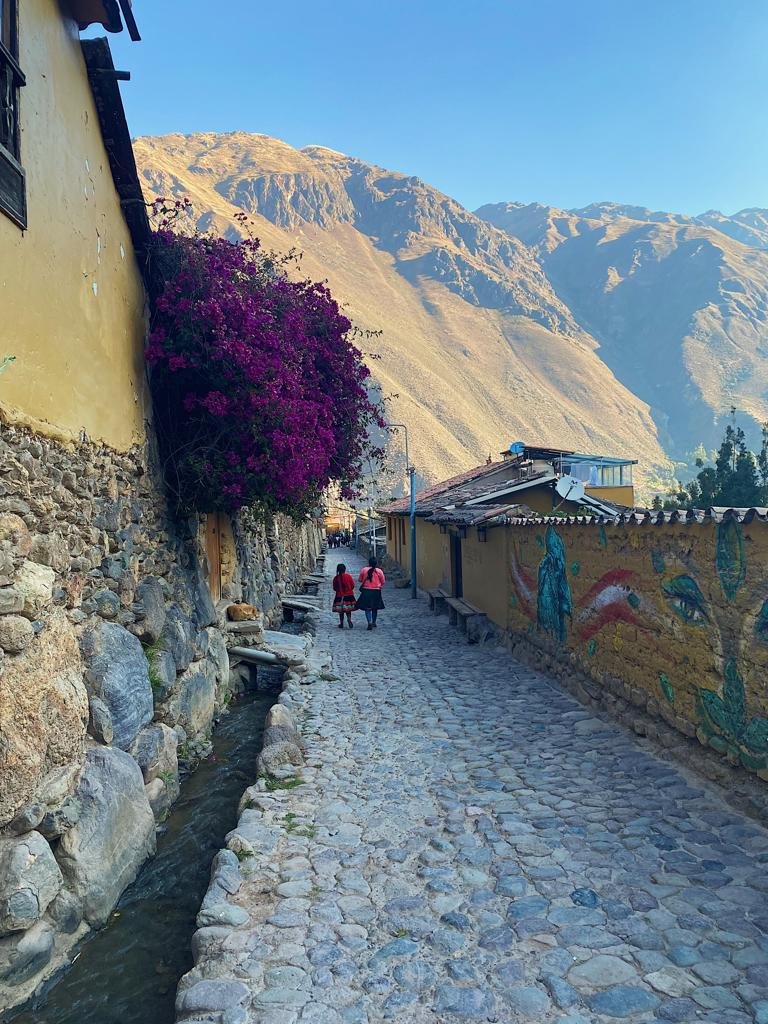
Nestled in the winding alleys of Ollantaytambo and captivated by the pretty Plaza de Armas, you can explore the historic part of this city that has retained its authenticity since the 13th century. A break that will allow us to breathe the air of rural life in the Sagrado Valley and to relax after the intense rhythms of the last days.
Visit to the archaeological park of the Fortress of Ollantaytambo
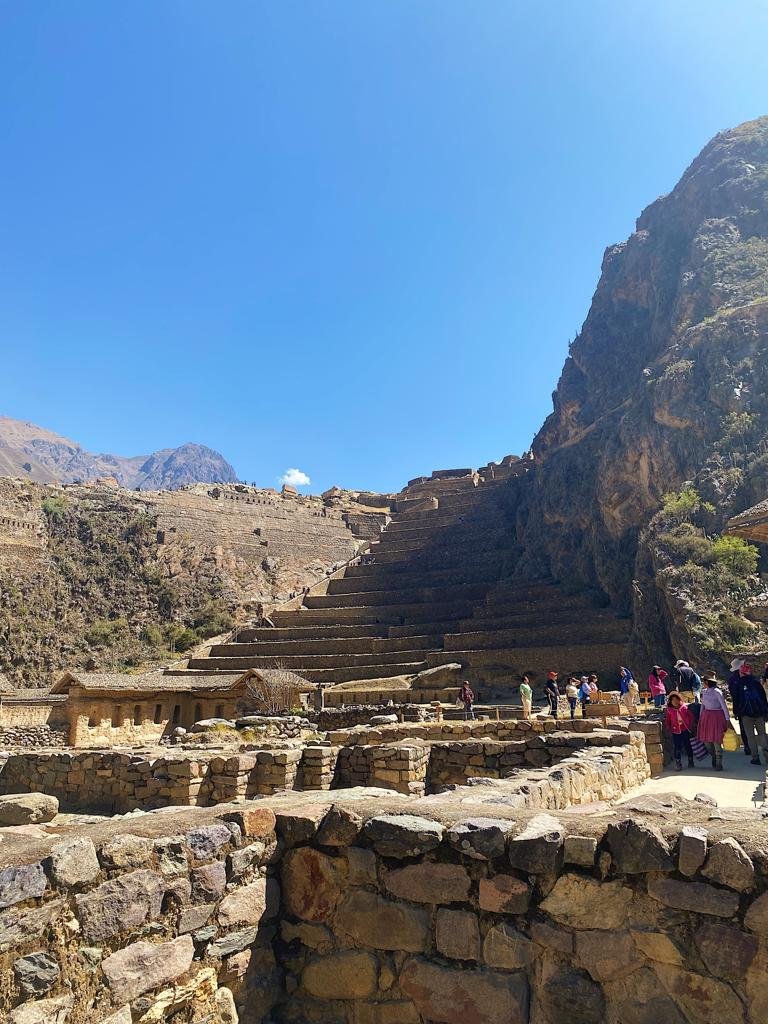
Our next stop takes us to the archaeological park overlooking the town of Ollantaytambo. It is the ruins of an Inca fortress never completed, alleged victim of the arrival of the Spanish. This fortress was the stage of the greatest Inca victory over the Spanish forces during the wars of conquest. The advice is to visit the site in the morning, before the influx of large groups organized by tourist agencies, to enjoy in tranquility of the mystical atmosphere that surrounds it.
Back to Cusco by taxi
In the afternoon, it’s time to take a shared taxi back to Cusco. It will be a journey of about two hours, passing by Chinchero, from the fairly reduced cost (about 20 USD).
Back in Cusco, where you will spend the night, it’s time to plan your next adventure: the Rainbow Mountain. We recommend booking the excursion at one of the many local tourist agencies. While you allow yourself the freedom to negotiate prices (often inflated for tourists), keep in mind that rates between agencies are generally similar.
Day 6 - The 5'200 m. s.l.m. of the Rainbow Mountain
Nestled among the peaks of the Peruvian Andes, Rainbow Mountain, also known as Vinicunca, offers an extraordinary experience for adventurers and nature lovers. Located 5’200 meters above sea level, its peak is a real natural rainbow, thanks to the 14 minerals that paint its surface of turquoise, lavender, gold and many other shades.
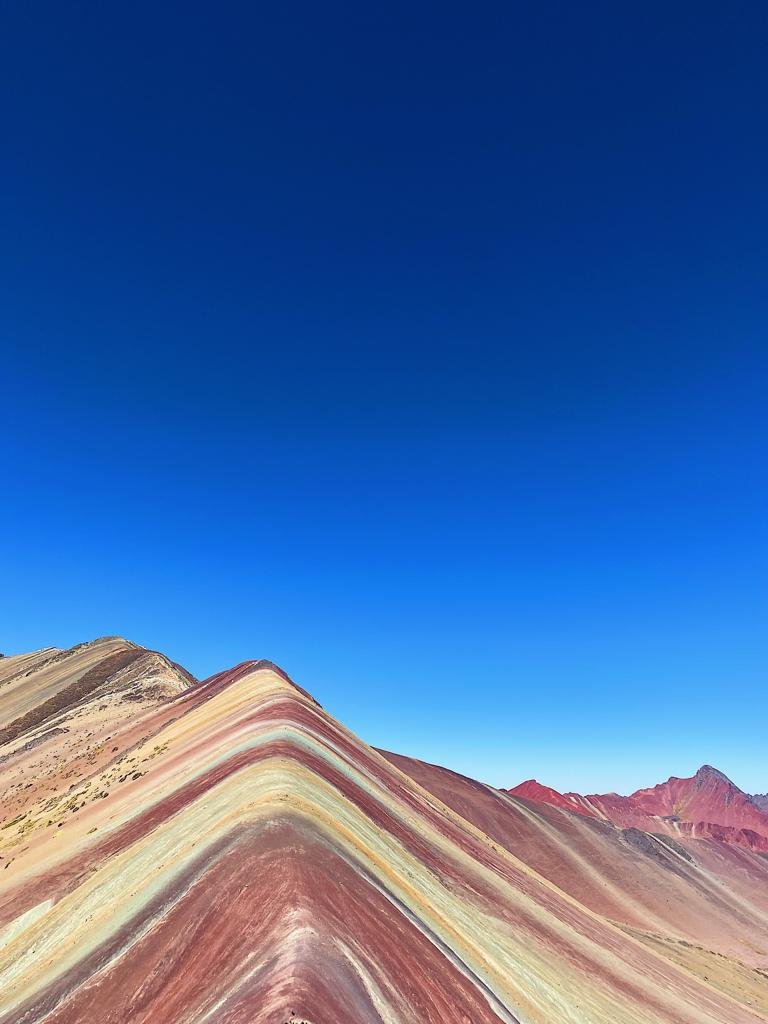
Access to Rainbow Mountain is regulated and requires the support of authorized tour operators who have the necessary access permits. It is therefore not possible to go there independently. It is advisable to book the trek in advance, preferably the night before, as the departure from Cusco takes place at dawn, around 4 am. Numerous agencies offer similar packages, with an average cost of about USD 30, which include van transport from the historic center of Cusco to the starting point of the trek, the presence of an expert guide, the possibility of using hiking sticks and a buffet lunch. Normally you will be placed in a group of about 10 people The van ride will take about 3 hours, as will the trek to the famous viewpoint. For more experienced hikers, there is an option to extend the adventure in the picturesque Red Valley, in agreement with the guide. The return to Cusco is normally scheduled for 19.
Tips and recommendations for the excursion
The path to the panoramic view of the mountain does not require special hiking skills, but it is important to be aware of the altitude and its effects on the body. Make sure you are in good physical shape and consider planning your hike towards the end of your holiday to allow for an appropriate acclimatisation period.
Altitude can cause symptoms of mountain sickness, such as headaches, nausea and fatigue. It is essential to pay attention to these signals and act promptly. Starting with a reliable travel agency that provides expert guides and emergency equipment, such as oxygen, can be vital in case of need.
For those who feel particularly fatigued, you can rent a donkey to facilitate the journey. It is advisable to request this service at the beginning of the excursion to get cheaper rates.
Preferably, choose to visit the Rainbow Mountain during the dry season, when the sky is clearer and visibility better. Keep in mind that climatic conditions affect the intensity of the colors of the mountain, although online images could be retouched.
Temperatures can be cold at 5,200 meters above sea level, so it is essential to dress in layers with thermal and warm clothing. Bring a windbreaker and apply sunscreen regularly to protect against intense UV rays at high altitude.
Day 7 - Crafts at the San Pedro market in Cusco and return to Lima
Coming to the end of our unforgettable journey to discover the Peruvian Andes and the wonder of the world, Machu Picchu, we invite you to dedicate one last walk to the charming streets of the historic center of Lima and to explore the charming San Pedro Artisan Market.
This charming market, dating back to 1925, is the oldest in the city of Lima and was even designed by Gustav Eiffel, the same engineer who created the famous Eiffel Tower in Paris. Open 365 days a year from 6am to 5pm, San Pedro Market offers an authentic and vibrant experience.
Inside, visitors can immerse themselves in a world of flavors and colors, finding a wide range of fresh products of the region, including fruits, vegetables, meats, bread and spices. In addition, the market boasts a varied selection of local crafts, ideal for taking home an authentic piece of Peru. Do not forget to bargain prices!
In the dining area, you can delight the palate with typical Peruvian cuisine, prepared with fresh and genuine ingredients, or refresh yourself with freshly squeezed juice, offering an authentic taste of local flavors.

